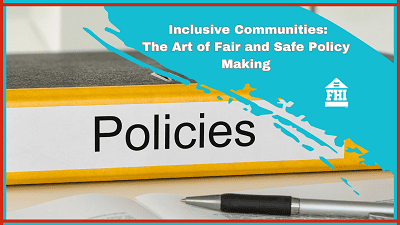Inclusive Communities: The Art of Fair and Safe Policy Making

Supervision Rules and Technology Access
When formulating supervision rules for facilities like pools or gyms, consider factors beyond just age, such as maturity and skill level. For instance, pool rules might be based on swimming proficiency rather than a strict age cutoff. Similarly, access to areas like the Business Center should reflect today’s tech-savvy youth. Rather than imposing an age limit, focus on responsible behavior and proper usage. These considerations ensure that rules are not only fair and inclusive but also adapt to the evolving digital landscape and diverse capabilities of younger residents.
Safety Versus Discrimination in Common Spaces
Distinguishing between safety measures and potential discrimination is crucial in rule-making. While banning activities like skateboarding for safety is generally acceptable, such policies should apply to all residents to avoid age-based discrimination. Additionally, rules restricting children from playing outside within complex gates warrant reconsideration. A more balanced approach might involve designated play areas that allow children to enjoy common spaces without causing disturbances. This strategy not only addresses safety concerns but also respects the rights of children to use shared facilities.
Equal Access and Neutral Enforcement
When it comes to public areas of your property, it is important to ensure that equal access is granted with fair enforcement to avoid a fair housing violation. For example, the disparity in pool hours for adults and children could be seen as discriminatory. Instead, consider implementing family swim times or assessing the hours based on safety and usage patterns rather than age. Moreover, the enforcement of quiet hours should be uniformly applied to all residents. A fair and consistent approach in applying these rules is essential to avoid any perception of age-based bias and to maintain a harmonious living environment.
Regular consultation with fair housing attorneys ensures compliance with evolving laws. Additionally, actively seeking feedback from residents, especially families with children, can guide the development of rules that are both practical and respectful of everyone’s needs. This engagement not only helps in tailoring policies that are community-centric but also fosters a sense of belonging among all residents.
Documentation, Transparency, and Regular Reviews
Clearly documenting the reasons behind specific rules, especially those regarding supervision, is vital for transparency and can be crucial in case of legal scrutiny. Furthermore, the societal and legal landscape is constantly changing. Regularly reviewing and updating community rules to reflect these changes is essential in maintaining a legally compliant and inclusive environment.
Additionally, actively seeking feedback from residents, especially families with children, can guide the development of rules that are both practical and respectful of everyone’s needs. This engagement not only helps in tailoring policies that are community-centric but also fosters a sense of belonging among all residents.
In conclusion, this article underscores the necessity of formulating community rules with fairness, safety, and legal compliance in mind. It highlights the importance of adaptable supervision policies, appropriate technology access for youth, and uniform application of safety measures to avoid discrimination. Balancing children’s play rights with communal order, ensuring equitable policy enforcement, and actively engaging with residents are key. Regular training, transparent rule documentation, and staying current with legal developments are essential for maintaining an inclusive, compliant, and harmonious community environment. This approach not only aligns with fair housing laws but also promotes resident satisfaction and overall community well-being.















 Accessibility
Accessibility